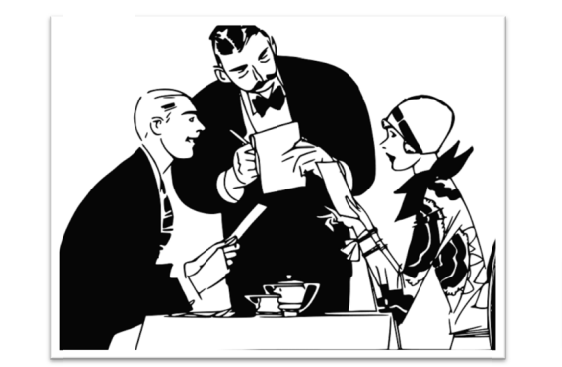Waitrons
Lesson 1: Professional Waiter
Definitions
Waitron – Salesperson / offers Excellent Service on Food and Beverage
Waiter – male
Waitress – Female
How to spot a professional waitron
UNDERSTANDING THE IMPORTANCE OF GREETING CUSTOMERS PROMPTLY AND POLITELY, IDENTIFYING THEIR NEEDS AND REQUIREMENTS, AND SITTING THE EFFECTIVELY
You only have one chance to make a first impression, so you must ensure that you are polite and genuine when you greet customers. Your establishment may have a set greeting that they wish you to use or if not, you should practice a greeting that sounds warm and honest. A sincere greeting puts customers at ease and the service on a positive note.
Greet customers promptly and politely
- Acknowledge customers as soon as possible (ideally within thirty seconds). this is important for two reasons :
*they do not feel embarrassed being left standing at the door
*you have recognized them and let them feel important. - Although it may not be possible to attend to customers immediately, a smile or a nod will let them know that you have seen them arrive and will attend to them shortly.
- Avoid unnecessary delays when dealing with customers
- It is essential to give equal attention to all members of a group booking
- Smile and display welcome body language.
- Greet the customers in a courteous and friendly tone of voice and show interest in them.
- Address them either as ‘Sir’ or ‘Madam’ or preferably, if you want their Surname, by saying e.g ‘Mr/Mrs. Smith ‘. These will usually be regular customers of your restaurant and they will feel flattered if you remember them by name.
- Maintain eye contact with the customer.
- Appear calm, confident, and controlled. Even if you are busy, you should not allow the customer to feel this.
- Your speech should be clear, grammatically correct, and free from slang.
Characteristics of positive and negative body language
This should help you to avoid projecting a navigate attitude and promote effective non-verbal communication
| Positive body language | Negative body language |
| Looking at the guest’s face | Avoid looking at the guests |
| Make frequent eye contact | Avoid guest’s eye or stating aggressively |
| Nodding and smiling as other people speak | Repeatedly licking your lips or clearing your throat |
| Uncrossing your arms | Keep your arms folded |
| Steepling of your fingers | Clasping your fingers tightly together |
| If standing, turn toward the guest | Banging the tables or pointing the guest |
| Don’t lean on the guests | Standing over the seated guests |
| Maintain a relaxed posture | Leaning away from the guest |
| Stand straight, hands on the side/back/front | Don’t stand akimbo/holding your waist |
| Have open hands | Fidgeting |
| Keep yourself busy in case you don’t have anything to do | Avoid standing in groups |
| Be professional | No chewing in restaurant |
| Walk straight and upright | Avoid scratching your head/face/chin |
| Phones in a locker or on vibration | Use of phones/ringing phones |

| Donts | Dos |
| This is not my job … | This is who can help you |
| You are right, this stinks | I understand your frustration |
| That is not my fault | Let me see what l can do about that |
| You need to talk to my manager | I can try to assist you… |
| Do you want it by when | I will try my best |
| Calm down… | I do apologize … |
| I am busy right now | I will be with you in a moment |
| Call me back | I will call you back |
| I’m not sure | I will quickly check for you |
| What do you want | How can l help/assist you |
Identifying customer’s needs and requirements
CHILDREN – good restaurant service includes treating children in the same way as adults. In no circumstances should children be ignored, and never refer to them as kids’?
CUSTOMERS WITH MOBILITY DIFFICULTIES ‐ can refer to customers with wheelchairs, on crutches, or with serious limps, Ensure that it is for them to reach their tables and that they have enough space once seated at the table.
CUSTOMERS WITH COMMUNICATION DIFFICULTIES – to the best of your ability try to have an intelligent conversation with the customers. If you feel the customer does not understand you, call someone with more experience. To help. Most foreigners will come to restaurants so you must be able to communicate with them, be patient and speak slowly
ADULTS – It is important to treat all customers the same. Never make comments that may be offensive to their color, race, disability, religion, or sex. Maintain a friendly and polite approach, even if the customer is unfriendly in return. The way you address the customer is a reflection of the establishment. You are representing your WORKPLACE, so never let your personal feelings affect the way you treat customers.
In the workplaces
Find out whether your restaurant is wheelchair friendly and has a children’s menu

